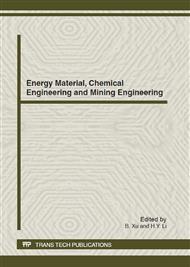p.9
p.13
p.18
p.22
p.27
p.31
p.39
p.43
p.47
Magnetic Properties and Glass Forming Ability of Fe-B-Y-Nb-Zr Bulk Metallic Glasses
Abstract:
Bulk metallic glasses (BMGs) alloys (Fe71.2B24Y4.8)96Nb4-xZrx (x = 1-4 at.%) with a maximum diameter of 5 mm were synthesized with low purity materials by copper mold casting technique. The effect of Zr substitution for Nb on the structure, thermal stability and the magnetic properties has been studied. It was found that the substitution of an appropriate amount of Zr for Nb can improve the glass forming ability. The wide supercooled liquid region ∆Tx (exceeding 123 K) and a high Tg (exceeding 868 K) demonstrated a high thermal stability of the present Fe-based BMGs. In addition, these BMGs also exhibit good soft magnetic properties with relatively high saturation magnetization of 88 emu/g, and low coercivity of 20 Oe.
Info:
Periodical:
Pages:
27-30
Citation:
Online since:
October 2012
Authors:
Price:
Сopyright:
© 2012 Trans Tech Publications Ltd. All Rights Reserved
Share:
Citation:


